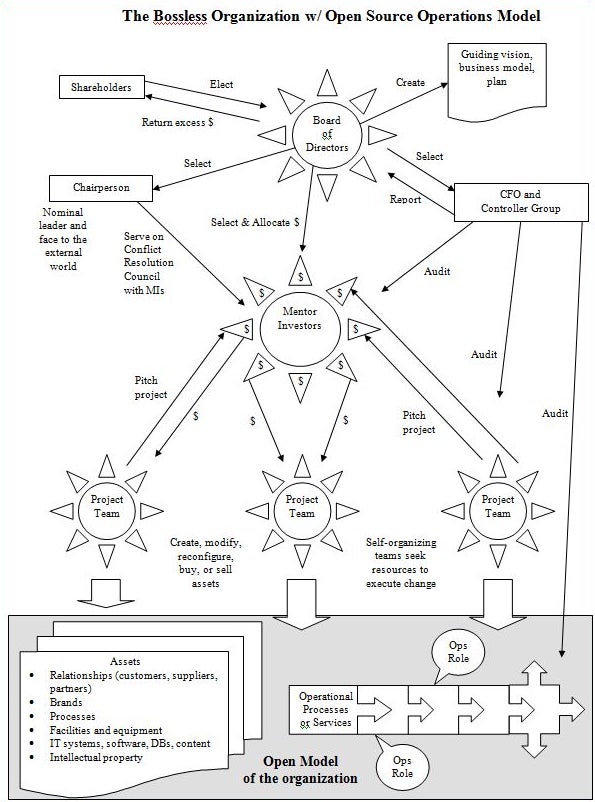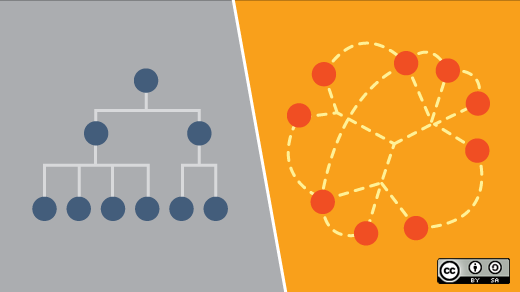All organizations manage a fundamental tension between stability and efficiency on the one hand and innovation, adaptation, and change on the other. They're usually biased towards the former—with not enough of the latter. And on top of that, every year new surveys tout the broad lack of engagement among most employees.
So how can organizations evolve to be both more innovative and more engaging?
We might seek an answer to this question with a closer analysis of open source communities and Silicon Valley.
Here's how.
Two strategies
Most organizations try to enact change through culture-focused strategies rather than systems-focused ones. But cultivating "good culture" is difficult, even harder to sustain, and results can fall short of expectations. Good organizational culture is necessary but insufficient.
As a thought exercise, imagine if America's Founding Fathers had chosen monarchy instead of democracy as a system of governance—but with really great leadership training so we had "better kings." That scenario might be easy to laugh at, but that's the equivalent of what most organizations do. We need systems to enable and reinforce desirable organizational cultures.
But existing organizational systems are extremely complex, interdependent entities that tend to resist change. How can we begin renovating them?
Maybe we needn't. Drawing on principles from Leo Linbeck (who advocates using software refactoring as a metaphor for organizational redesign) and research from John Kotter (who advocates for a "dual operating system" approach to the same issue), we might instead build a separate, parallel set of systems that encourage innovation and engagement. Two models can inspire us here:
- Open source: a transparent code base anyone can modify and improve.
- Silicon Valley: a venture-capital-driven entrepreneurial ecosystem combining new ideas, talent, and capital.
Like Silicon Valley, open sourced
What organizations need is a system of management running in parallel with their "legacy" systems, a Silicon Valley-like ecosystem capable of making improvements to the existing organization. In the spirit of open source, then, the organization's operations are transparently mapped with existing processes, systems, and assets. Then, self-organizing project teams identify opportunities to improve this "source code"—like improving efficiency, developing new products, or expanding into new markets.
But what drives creation of these self-organizing project teams?
We need an internal system modelled on Silicon Valley's rich network of angel investors and venture capitalists. We might consider building a new role, the "mentor investor," and distributing this function widely throughout the organization. Mentor investors are people with budgets to invest in projects. These funds can be spread wide to all employees (like Google's famous 20% time), or more concentrated in trusted leaders, depending on the organization.
Intrapreneurs throughout the organization identify opportunities and pitch these mentor investors for backing. And just like in Silicon Valley, these mentor investors sponsor, advise, and support teams—but don't control them (unlike existing bosses). They are held accountable for the results of their investments and can syndicate with others to spread the risk on larger projects.
Under this approach, intrapreneurs proactively propose bottom-up, self-organizing initiatives instead of reacting to top-down assignments. Also, just like in Silicon Valley, intrapreneurs can keep pitching their ideas to different internal mentor investors until they find one willing to back them; a single "no" can't kill an idea like it can in a hierarchy.
Over time, the organization essentially splits into two layers: the existing hierarchy, which works to execute daily operations, and this newer "projects ecosystem," which keeps improving and expanding it. Employees can hold roles on both sides of this divide, leading or participating in project teams in addition to holding operational roles. Rather than thinking of employees as having a single monolithic "job,"we start thinking of them as holding a portfolio of ever-changing roles. This is far more engaging for them, while also making better use of their talents and ideas. For example, a manager might run an operational department, mentor invest in a project team, lead another project team, and contribute to yet another project team.
Figure 1 (at the conclusion of this article) illustrates what this might look like.
Open issues
Of course this is just a high-level overview. Implementing a system like this would require answering some organization-specific questions, including:
- How should conflicts between projects and operations be handled? In general, since they're likely to resist change, operations should defer to projects by default. But they may raise valid objections that require conflict resolution. Change management processes like those used in open source projects and other open organization might also be worth considering.
- How should mentor investor investments be evaluated for value-added/return-on-investment?
- Should mentor investors have their own funds, or draw from a larger shared pool like the partners in a VC firm would?
- How should mentor investors, intrapreneurs, and teams be rewarded for the value they create?
- How can employee costs be allocated among roles, projects, departments, and other budgeting buckets?
- How can an internal marketplace be created so people can acquire and shed operational and project roles?
But these complexities can be worked out over time. Mentor investing, projects, and supporting systems can start small and evolve. The ultimate benefits in becoming a more agile, innovative, and engaging workplace that more fully utilizes employees' talents make the transformational journey one well worth beginning.
This article is based on the Gary Hamel MIX prize-winning Bossless Organization concept and its variant for startups, the Simple Open Venture.

opensource.com
Figure 1, courtesy of Tory Gattis (CC BY-SA)






Comments are closed.